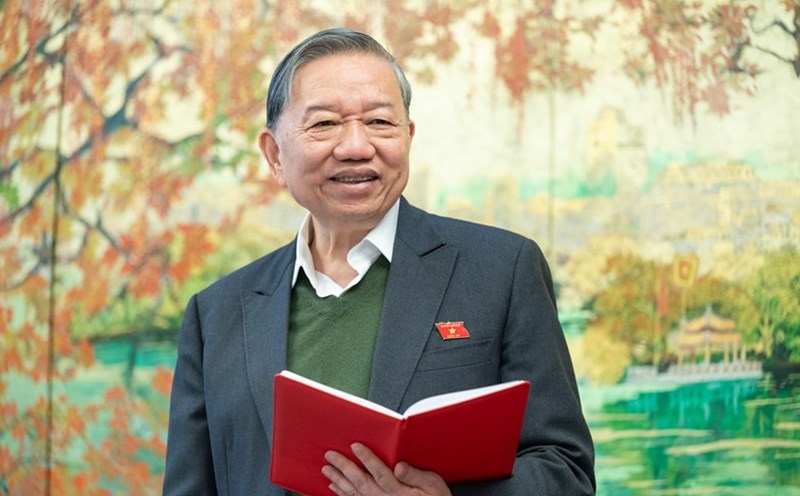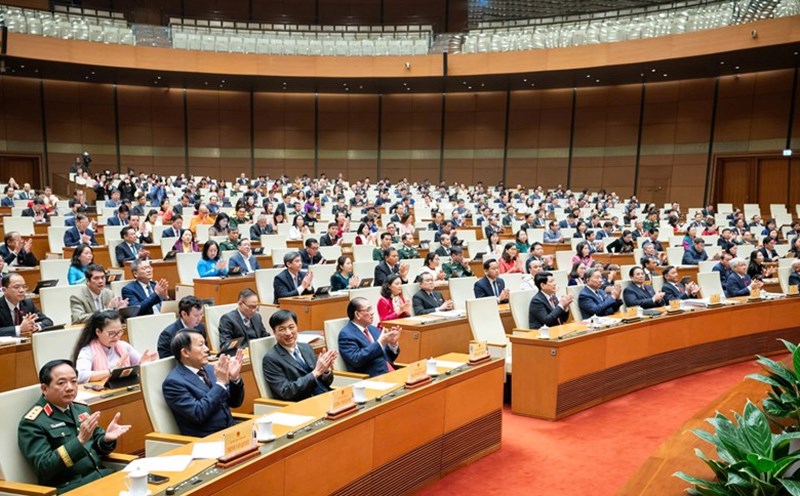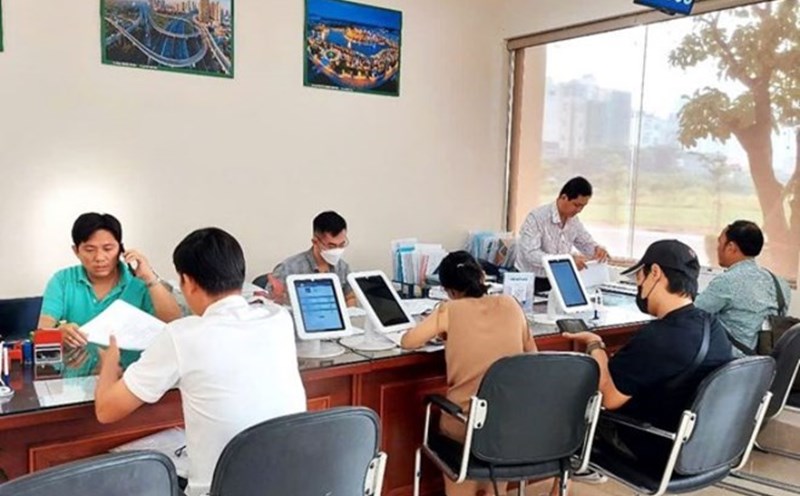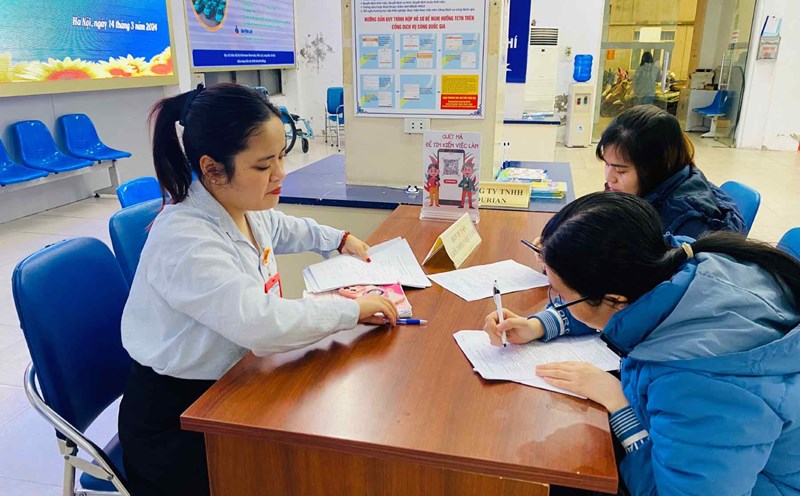Project completion in 2030
Presenting the Proposal on the investment policy for the Lao Cai - Hanoi - Hai Phong railway construction project on the afternoon of February 13, Minister of Transport Tran Hong Minh said that recently, the Party Central Committee and the Politburo have issued many Resolutions and Conclusions on the investment policy for the Lao Cai - Hanoi - Hai Phong railway.
Regarding the scope, according to the minister, the starting point of the project is at the rail connection point across the border between the new Lao Cai station and Ha Khau Bac station (China); the end point is at Lach Huyen wharf area, passing through 9 provinces and cities; the main line length is about 390.9 km and 3 branch lines are about 27.9 km.
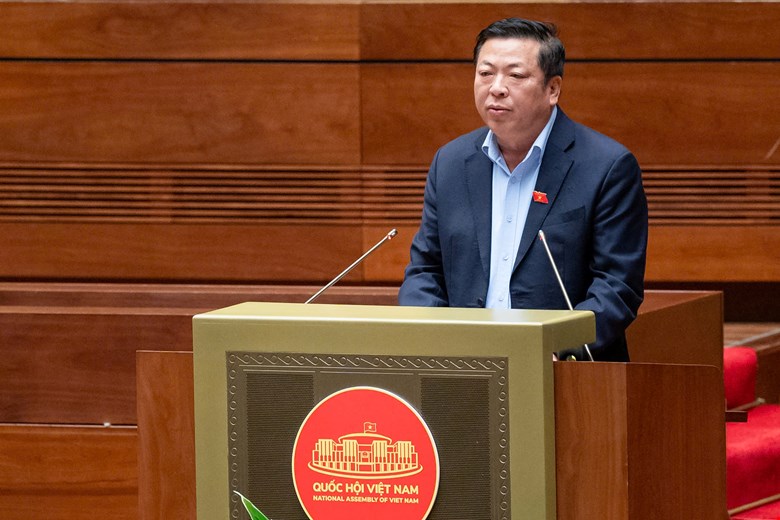
Regarding the scale of investment, a new electrified railway line with a gauge of 1,435 mm will be built to transport both passengers and goods; the main line from Lao Cai Moi station to Nam Hai Phong station will have a design speed of 160 km/h, the section through the Hanoi unit area will have a design speed of 120 km/h, and the connecting sections and branch lines will have a design speed of 80 km/h.
"The preliminary total investment for the project is about 203,231 billion VND. It is proposed to use capital for the project from the state budget; domestic capital, foreign capital (borrowed from the Chinese Government) and other legal capital sources," said Minister Tran Hong Minh.
According to Mr. Minh, the project will have a feasibility study report prepared from 2025, striving to basically complete it by 2030.
Need to carefully evaluate financial plans
Examining the investment policy of the Lao Cai - Hanoi - Hai Phong railway construction investment project, Chairman of the National Assembly's Economic Committee Vu Hong Thanh assessed that the project was basically consistent with the socio-economic development strategy and plan and the National Master Plan for the period 2021 - 2030, vision to 2050, the Railway Network Plan for the period 2021 - 2030, vision to 2050, and relevant regional and provincial plans that have been approved.
However, the Chairman of the National Assembly's Economic Committee also requested to clarify the Project's conformity with the National Land Use Plan for the 2021-2030 period, with a vision to 2050, and the allocation and zoning of land for the Project in the provincial planning of the localities where the Project passes.
Regarding the effectiveness of the Project, Mr. Vu Hong Thanh said that according to the Government's Proposal, it is expected that in the first 5 years of operation, the expected revenue will only cover the costs of operation, maintenance, and vehicles. The State needs to provide preliminary support of about 109.36 million USD in 5 years for infrastructure maintenance costs from the economic career capital allocated to the railway system, such as the current maintenance of national railway infrastructure.
In addition, the North-South high-speed railway project is expected to lose about 778 million USD in the first 4 years of operation, so the State needs to provide preliminary support of about 887.36 million USD for these two projects alone. Therefore, the Inspection Committee recommends an overall assessment of the effectiveness of the railway projects planned for investment and a thorough assessment of the financial plan and impacts during the operation and exploitation of the projects to minimize future risks.
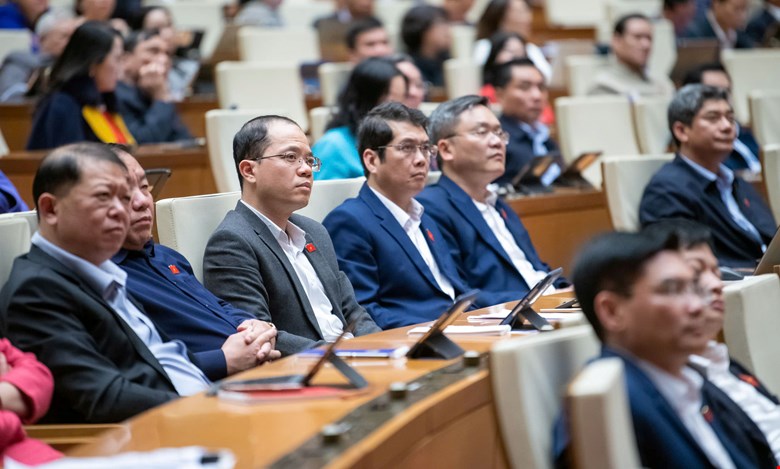
Regarding the capital source for the Project, the Chairman of the National Assembly's Inspection Committee said that the Project has a very large scale and total investment. In the medium-term period of 2021 - 2025, the capital demand for the Project is about 128 billion VND, which has been balanced by the Government in the medium-term public investment plan. In the period of 2026 - 2030, the capital demand is about 177,282 billion VND and in the period of 2031 - 2035, the capital demand is about 25,821 billion VND.
The Government proposes to use domestic capital, foreign capital and other legal capital sources for the Project, and at the same time proposes a number of specific and special mechanisms and policies such as: not appraising the ability to balance capital according to the provisions of the Law on Public Investment; during the implementation of the Project, allowing the Prime Minister to decide to issue Government bonds, mobilize official development assistance (ODA) capital, foreign preferential loans, use increased revenue sources, save annual central budget expenditures (if any) and other legal capital sources to ensure the suitability and feasibility of the Project.
These specific and special mechanisms and policies have been approved by the National Assembly in the past and have been reviewed and commented on by competent authorities, so the Government's proposal is well-founded. However, it is recommended that during the implementation process, the principle of ensuring macroeconomic balance and national public debt safety must be followed.

